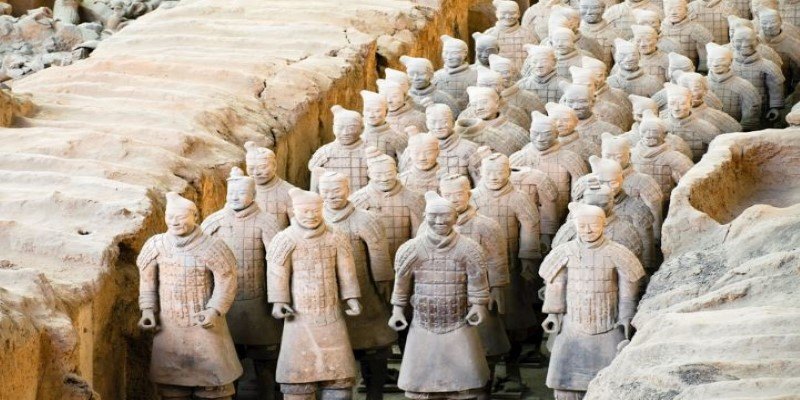Trading Volume Explained: What It Is and How to Measure It
The concept of trading volume stands vital throughout financial market activities. Trading volume represents all the shares and contracts and assets which get traded in a particular time like a normal trading day. Understanding trading volume helps investors and traders gauge the activity and interest in a particular stock or asset. Higher trading volume often indicates strong market interest, while lower volume may suggest less activity. By tracking trading volume, you can make more informed decisions about buying or selling in the market.
What is Trading Volume?

Trading volume consists of calculating the number of shares or contracts which traders execute in a specified time span. The overall number of shares traded every day serves to compute trading volume through daily addition. Stock trading volume equals the number of shares bought and sold within a single day so in a transaction with 100,000 shares bought and 100,000 shares sold the trading volume reaches 200,000.
Why Is Trading Volume Important?
Trading volume plays a crucial role in financial markets as it provides valuable information to investors and traders. Here are some reasons why trading volume is important:
- Market Interest: High trading volumes often indicate strong market interest in a particular stock or asset. This means that there are many buyers and sellers actively trading the stock, which can lead to more accurate pricing and efficient market movements.
- Liquidity: Volume is also used as a measure of liquidity in the market. Higher volumes mean there are more buyers and sellers willing to trade at any given time, making it easier for traders to enter or exit positions without significant price changes.
- Trend Confirmation: Changes in trading volume can also provide insight into market trends. For instance, an increase in volume during uptrends may signify bullish sentiment, while an increase in volume during downtrends may indicate bearish sentiment.
- Volatility: Trading volume can affect volatility in the market. High trading volumes can lead to increased volatility, as large buy or sell orders can cause significant price movements.
- Market Manipulation: In some cases, trading volume can also be used to identify potential market manipulation. Unusually high trading volumes or spikes in volume may indicate artificial inflation of a stock's price.
Overall, tracking trading volume can provide valuable information about the health and activity of a market. It is an important tool for investors and traders to understand and analyze before making any investment decisions.
How Can You Measure Trading Volume?
There are several ways to measure trading volume in financial markets:
- Tick Volume: This measures the number of price changes that occur during a given period.
- Tick Count: This counts the number of trades that occur during a given period.
- Dollar Volume: This measures the total value of all shares or contracts traded during a given period.
- Volume/Market Cap Ratio: This compares trading volume to the overall market capitalization of a stock or asset. It is used to evaluate the level of investor interest in a particular security.
Factors That Affect Trading Volume
There are several factors that can affect trading volume in financial markets, including:
- Market Conditions: Volatile and uncertain market conditions may lead to higher trading volumes as investors and traders react quickly to changes in prices.
- News and Events: Significant news or events related to a particular stock or asset can cause spikes in trading volume due to increased interest and activity in the market.
- Earnings Reports: Quarterly earnings reports of companies often lead to changes in trading volume, as investors reassess their positions based on the company's performance.
- Market Sentiment: Positive or negative market sentiment can also significantly impact trading volume. For example, during a bull market, there may be higher trading volumes as more investors are interested in buying stocks and assets.
- Regulatory Changes: Changes in regulations or policies can influence trading volume, especially if they affect specific industries or sectors.
Practical Applications of Trading Volume
Understanding trading volume can be helpful in making investment decisions. Here are some practical applications of trading volume:
- Identifying Market Strength: Tracking trading volume can help you determine whether a market is strong or weak. Increasing volumes suggest strong market interest, while decreasing volumes may indicate weakening demand.
- Monitoring Stock Price Movements: Changes in trading volume can be used to identify potential price movements in stocks and assets. Higher volumes often precede significant price changes, making it easier to spot potential buying or selling opportunities.
- Setting Stop-Losses and Targets: Trading volume can also be used to set stop-loss levels and targets for trades. For instance, if a stock's average daily trading volume is 1 million, you may set your stop-loss at 500,000 shares to ensure liquidity in case you need to sell.
- Identifying Trends: By analyzing changes in trading volume over time, you can identify trends and patterns in the market. This information can help you make more informed decisions about when to enter or exit positions.
Common Misconceptions About Trading Volume

- Higher Volume Means Higher Price: This is not always the case. While high trading volumes can indicate increased demand and interest in a stock, it does not necessarily mean that the price will continue to rise.
- Lower Volume Means Lower Interest: Low trading volume does not always signify low market interest. It could also mean that investors and traders are holding onto their positions instead of actively buying or selling.
- Volume Patterns Are Always Accurate Predictors: While tracking volume patterns can be helpful in making investment decisions, they are not always accurate predictors of future price movements. Other factors such as news, economic indicators, and sentiment also play a significant role in market movements.
Conclusion
Trading volume is a critical aspect of financial markets that provides valuable information about market activity, trend confirmation, and volatility. It can be measured in various ways and is influenced by several factors. Understanding trading volume can help investors make more informed decisions about their investments, but it should not be the sole factor considered when making investment decisions. As with any other aspect of investing, it is essential to conduct thorough research and analysis before making any trades or investments based on trading volume alone.












